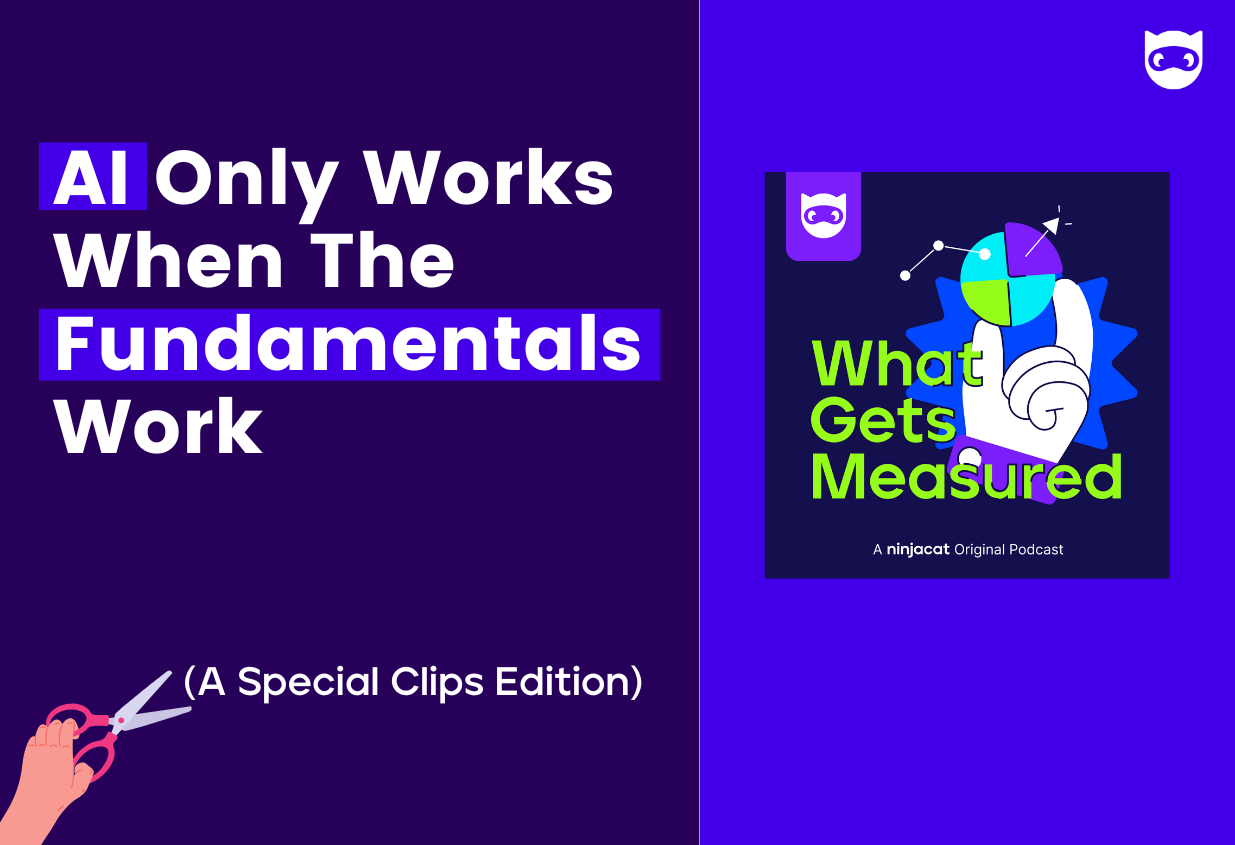How To Build A Dashboard For Clients

In our current fast-paced, app-laden, and digitally-bespoke world, it’s hard to imagine a time when marketers and advertisers didn’t rely on dashboards full of data to guide their decisions.
But in reality, the era of dashboard darkness is upon us and it’s up to agencies to elevate their approach to client reporting. Let’s clear up some facts about dashboards, discuss how to build dashboards clients will use, and discover how differentiating between reports and dashboards can improve your agency’s ability to glean insights and demonstrate performance.
The Truth About Dashboards and Client Reporting

The main problem facing data-driven marketers using dashboards for client communication isn’t that quality data or fancy dashboards are hard to come by; it’s that most clients ignore dashboards.
Marketers can attest to the difficulty of effectively communicating marketing performance results, through stakeholder reports and dashboards alike.
Years of first-hand experience in data storytelling and NinjaCat product research shows that fewer than 10% of clients or key stakeholders regularly log-in to dashboards, a majority preferring to wait for pre-packaged reports.
In effective client communication, the relationship between dashboards and reports should be viewed as symbiotic, not binary.
What’s the difference between ‘dashboards’ and ‘reports’ again?
Dashboards Transmit Data, Reports Tell Data Stories
The definition of client reporting seems fairly straight-forward; create the campaign from a brief, measure the results, share them with clients through dashboards or reports.
However, understanding the differences between dashboards and reports can improve the way performance results are communicated, and transform the reporting process within your agency into a marketable asset.

The differences between reports and dashboard mainly revolve around setup, presentation-style, and function.
- Dashboards are designed for everyday use, the exploration of data sets, digging into data from high-level to granular, accessible from anywhere.
- Reports are designed for single-use, explaining data stories, annotated to highlight key metrics or issues, data curated from relevant warehouses and dashboards, and transformed into presentation-ready formats.
If marketing data is water, think of dashboards as a waterfall, and reports as the various vessels you dip into the deluge to sample and understand the continuous flow of information.
Building a Useful Dashboard for Clients
We’ve covered the basics on building a digital marketing reporting dashboard before, but since every new account brings distinct qualities and preferences, the creation of a useful dashboard for clients requires a standard yet customizable approach.
Effective dashboards are built properly when they’ve answered and addressed the following considerations:
- The quality and purpose of the analytics data
- The audience and their data tolerance
- The decisions and actions the dashboard is meant to inform
We have access to every metric imaginable, so it’s important to identify the necessity and purpose behind each reportable analytic before building a marketing performance dashboard. It can be easy to fill a dashboard with vanity metrics that aren’t attached to business outcomes.
In order to be effective, each data set on the dashboard should compel insight or action in the audience.
Marketing Metrics to Include in a Dashboard
While every campaign and client is unique, there are standard marketing performance KPIs most dashboards feature, including
- Engagement metrics
- Conversion rates
- Cost per lead
- Customer acquisition cost
- Return on advertising spend
- Return on investment
The way to transform your agencies dashboard for clients from a nice-to-have to a need-to-have, is to ensure the metrics track performance on both channel and campaign levels.

This Instagram advertising dashboard template from NinjaCat presents salient and important performance metrics in a style that illustrates trends without being overwhelming.

In this website performance dashboard example, also from NinjaCat, the uncluttered design highlights simple acquisition and demographic metrics, focusing potential strategic optimizations.
Dashboards and Effective Client Communication
While it may be true that clients don’t regularly check dashboards, agency-side marketers check in with performance dashboards daily, if not hourly to ensure campaigns are running smoothly.
This is where the breakdown in effective client communication happens, and the healing begins; recognizing that one side has an overfamiliarity with metrics the other side may find indecipherable.
If your agency understands dashboards have specific features that serve distinct functions, and you communicate results with clients in a way that helps them follow the story, rather than get lost in details, then you’re doing just fine.
A comprehensive approach to reporting that includes the proper use of both dashboards and presentation-ready reports to clearly communicate results to clients, places you in an advantageous position to utilize data to deliver better outcomes and drive business results for your agency.




.png)
